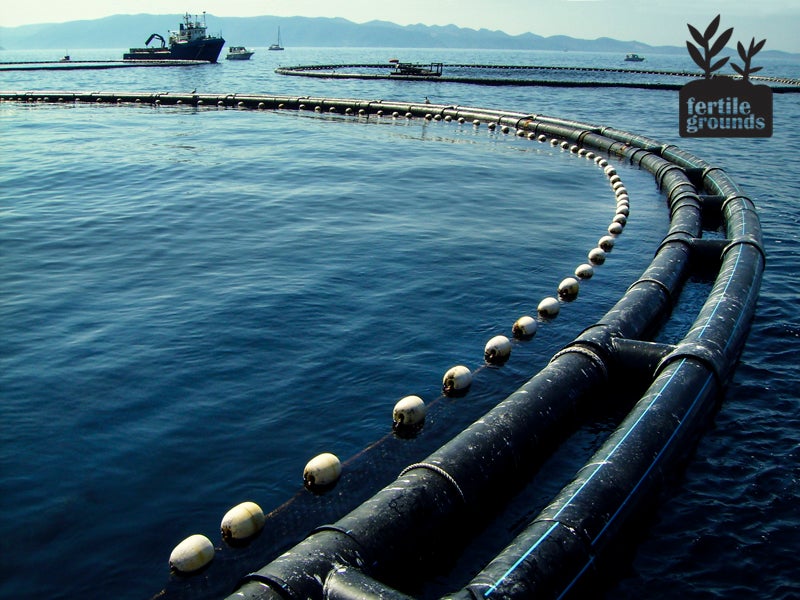Drones, Data and Insects: How Innovation Can Make the Food System More Sustainable
Ag tech is booming, and it has the potential to redefine how and where we farm.

This page was published 9 years ago. Find the latest on Earthjustice’s work.
Here at Earthjustice, we’re taking a closer look at maggots. It turns out these little bugs, the larvae of the black soldier fly, can be part of a major leap forward in the production of sustainable food—for fish. Farmed fish today are mostly fed unsustainably on a diet of small wild fish, which are vanishing. But fish on farms also like to eat insect larvae, and these larvae like to eat waste. Using larvae to manage waste and provide feed for fish farms would be a major coup, and several companies around the world are already working on it. U.S. outfits, however, risk being left behind because of laws that make it easier to to feed insects to people than to feed them to fish.
My colleagues and I are exploring ways we can bring down legislative barriers to innovations that hold promise for cleaning up our food system. Once the domain of corporate giants like Monsanto, agricultural technology is the new home for scrappy, out-of-the-box thinkers who are expanding the definition of agricultural technology—and even the traditional definition of agriculture. They’re developing techniques that not only help conventional farms use fewer chemicals and less land, water and energy, but can also revolutionize how we produce food. Tomorrow’s farms might be vertical and urban, underwater or even come from a box. The exact shape the farms of the future might take remains to be seen, but it’s clear that the burgeoning ag tech sector can help clean up our food system, making it more sustainable, less wasteful and healthier for all.
According to AgFunder News, a site that tracks agriculture and technology for investors, much of the recent growth in the ag tech sector is in an area known as precision agriculture. Most crops in the United States are grown on farms larger than 1,000 acres. On a spread that size, soil conditions can vary greatly. Even on a smaller farm, such as the Rainforest Alliance-certified coffee farm I help run in Costa Rica, we see variation in nutrient and water content across a single acre of land. It doesn’t make sense to apply the same amount of water or fertilizer across your whole property. When you’re not efficient with these inputs, the result is unnecessary expense—and pollution. In Costa Rica, we’re trying to figure out how to apply fertilizer tree-by-tree. Yet collecting and analyzing granular data about soil is an additional burden most farmers simply can’t take on.
Some farmers are already using soil sensors and data analysis to deliver targeted amounts of fertilizer and water to their crops. A company called CropX estimates that farmers can reduce water use by 30 percent, simply by pinpointing the location and timing of irrigation. Just three of the company’s $380 sensors can monitor the water needs of a 125-acre plot of land. And then there are drones. These flying robots have been getting a lot of attention lately. They can collect information that might be too subtle for the human eye to gauge. They’re faster than tractors and won’t compact soil. A drone can be equipped to take infrared images, monitor moisture, scout for disease or even spray a highly specific target. Drones can help ranchers keep tabs on cattle, or spot a cow with a fever.
Technology is also helping expand the borders of agriculture to new environments. A startup called Green Collar Foods is aiming to bring fresh produce into urban food deserts. The company uses aeroponic technology (growing plants in air or mist) and cloud analytics to help community entrepreneurs establish indoor, soil-free gardens in abandoned warehouses. Sensors collect data on humidity, temperature and other conditions and feed it into the cloud. Expert analysts offer the urban farmers guidance on how to optimize plant growth.
Fisherman-turned-farmer Bren Smith farms seaweed and shellfish underwater off the coast of Connecticut. Kelp and other seaweeds species, which don’t require any fresh water or fertilizer to grow, hang vertically on five acres below the water’s surface. Nets of scallops dangle alongside the kelp, while oysters sit in baskets below and clams lie buried in the farm’s ocean floor. Smith’s zero-input farm is like a living ocean reef. Smith believes kelp can not only provide food for humans, but also biofuels and animal feed—a sustainable replacement for industrially produced corn and soy.
A site called Farm Hack is enabling even low-tech innovations to gain traction among farmers. It’s an open-source collective where farmers can share DIY hacks, such as using garden hoses and polyethylene drums to create a low-cost, mobile watering system for rotational cattle grazing or how to build an app that pings you when your greenhouse gets too cold. And of course, some of the most successful clean farming strategies are nothing new; intercropping and cover cropping, techniques that suppress weeds and protect soil, have been around for thousands of years.
Creating a healthier, more sustainable food system doesn’t mean we should shun science. Better communication, more information and innovative farming strategies can help farmers use fewer chemicals and less land, water and energy, while getting fresh, healthy food to where it’s needed most.
Fertile Grounds is a blog series that examines the challenges and opportunities in ensuring access to healthy, sustainable and affordable food for all. We talk about the entire lifecycle of food—from seed selection and planting to consumption and disposal—because there is potential for improvement throughout. We’re informed by the expertise of our many clients and allies and by Earthjustice’s years of work to ban harmful pesticides, encourage sustainable farming methods, reduce pollution, support farmworker justice and promote a healthy relationship between farmers and communities.
Earthjustice’s Sustainable Food and Farming program aims to make our nation’s food system safer and more climate friendly.